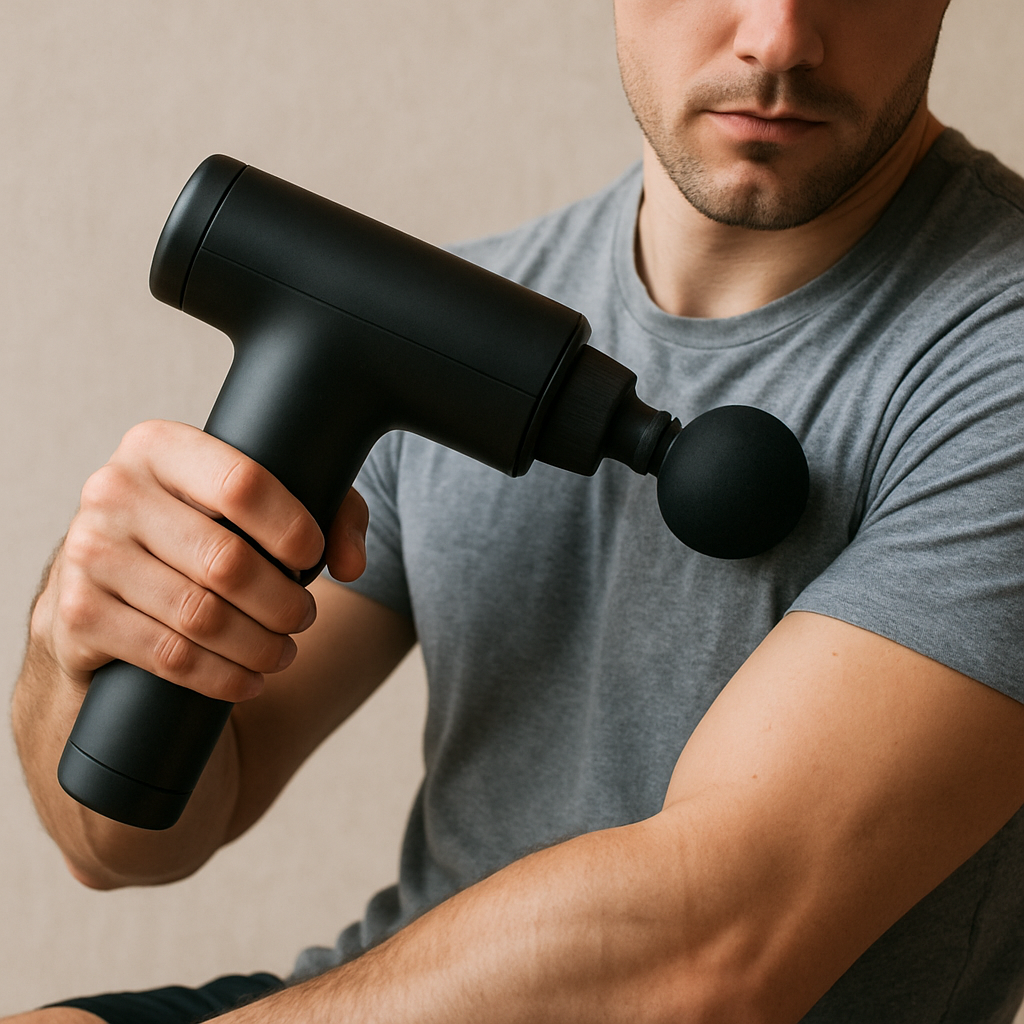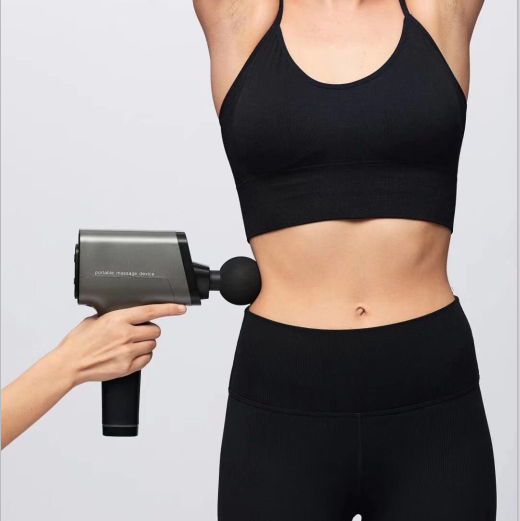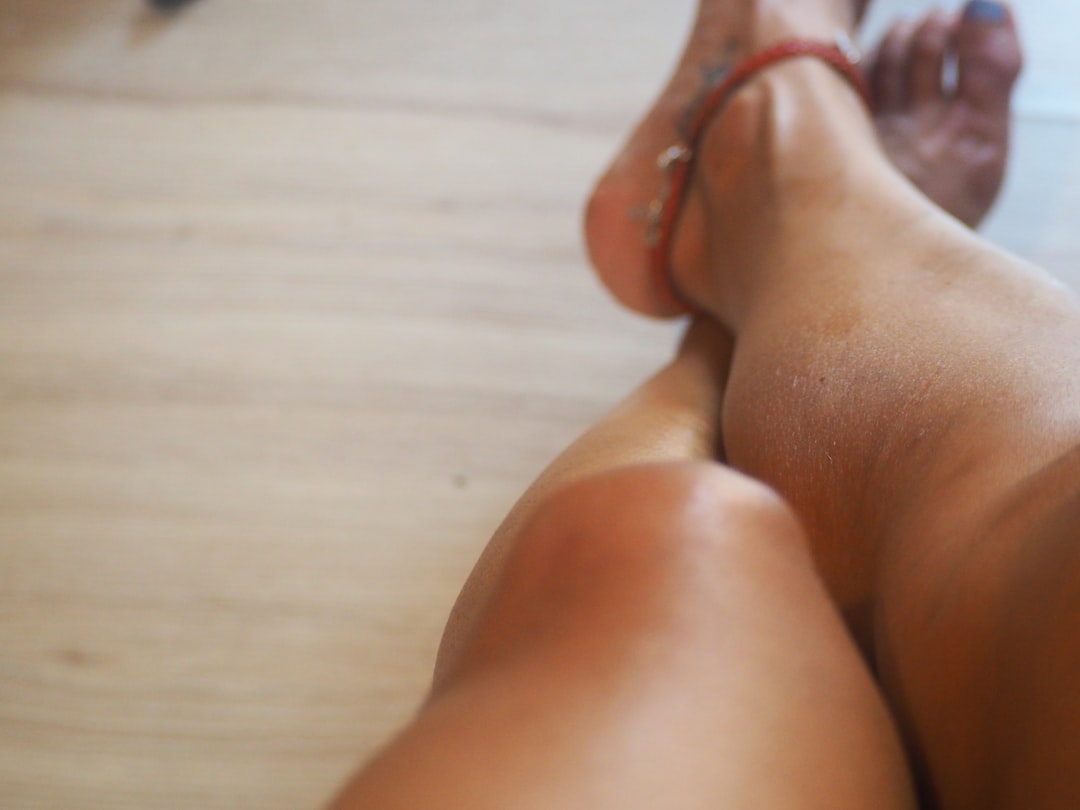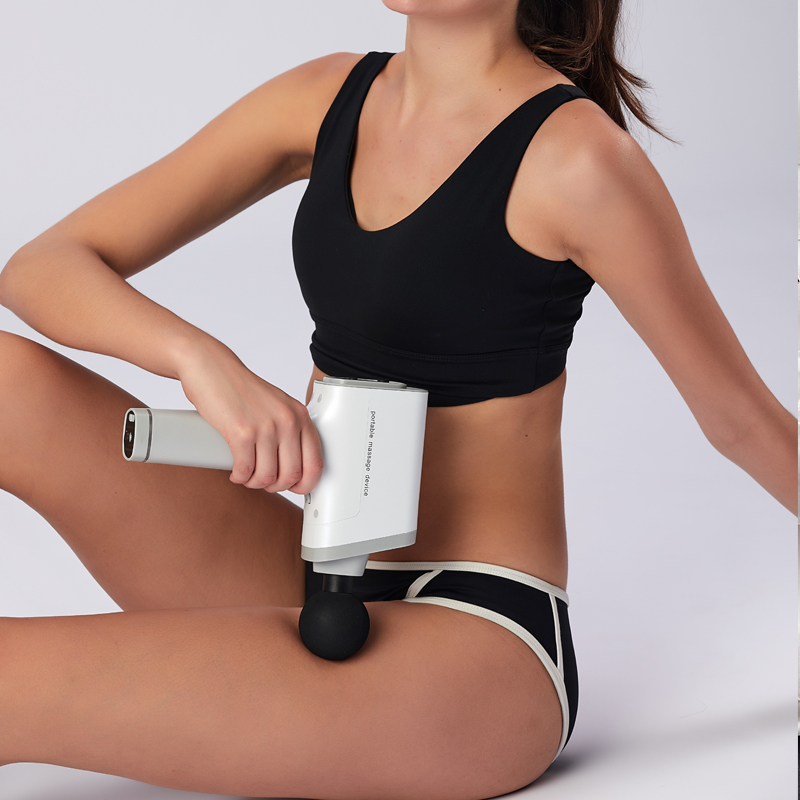


Sciatica can be an exhausting condition — radiating pain, tingling, or numbness running from your lower back down to your legs can affect everything from your workouts to your sleep. If you’ve ever wondered whether a massage gun could help relieve sciatica pain, you’re not alone. Many athletes, office workers, and even physical therapists now use percussive therapy devices to ease nerve-related muscle tension and discomfort.
But how effective are massage guns for sciatica? And how do you use them safely without making symptoms worse? In this expert-backed guide, we’ll cover:
Medical disclaimer: This article is for educational purposes only and not a substitute for medical diagnosis. Always consult a licensed healthcare provider if your pain persists or worsens.

Sciatica refers to pain that radiates along the path of the sciatic nerve — the longest nerve in your body, running from your lower spine through your hips, buttocks, and down each leg. It’s usually caused by irritation or compression of the nerve roots in the lumbar spine.
While massage guns won’t “fix” structural causes like disc herniation, they can significantly reduce the muscular component of sciatic pain — especially when tension or trigger points around the hips, glutes, and hamstrings are involved.

A massage gun delivers rapid, concentrated pulses of pressure to muscle tissue — a technique called percussive therapy. The goal is to release myofascial tightness, improve blood circulation, and stimulate the nervous system’s “gate control” mechanism to reduce pain signals.
According to several 2024 physiotherapy studies, percussive therapy can help:
“Massage guns are effective tools when used correctly — especially for piriformis-related sciatica,” explains Dr. Jane Collins, DPT, a licensed physical therapist. “The key is to target muscles, not the nerve itself.”

Before you begin, warm up the area with gentle movement or a warm compress to loosen tissues. Always start on the lowest speed setting and never apply pressure directly to the spine or bony landmarks.

When choosing a massage gun for sciatica, look for these key specs:
One example is the DARIUS DRS-8000HB Massage Gun — featuring a brushless motor, ergonomic handle, and 5 intensity levels. Its long battery life and soft silicone head make it ideal for daily recovery or targeted relief after long workdays.
Explore the DARIUS DRS-8000S2 →
Remember, more force doesn’t equal more relief. Gentle, consistent use yields better long-term results.
Yes, if misused. Avoid direct contact over the sciatic nerve or spine. Always target surrounding muscles instead.
Start with 2–3 sessions per week. If tolerated well, daily short sessions (5–10 minutes) on low settings can be safe.
Only under medical supervision. If your sciatica stems from disc herniation or spinal stenosis, consult a physical therapist before using any percussive device.
Emerging studies (2023–2025) show percussive therapy may reduce delayed-onset muscle soreness and improve range of motion. Its effect on nerve compression is indirect but supportive for muscle relaxation.
Massage guns like the DARIUS DRS-8000A can be a practical, non-invasive way to relieve mild sciatica-related muscle tightness. When used properly, they enhance circulation, reduce muscle tension, and support faster recovery. However, they should be part of a broader management plan — including stretching, posture work, and medical assessment if needed.
Listen to your body: If pain persists or worsens, seek professional care. Percussive therapy is a tool, not a cure — but in the right hands, it can make a world of difference.
👉 Want more recovery insights? Read our guide: Do Massage Guns Really Work?